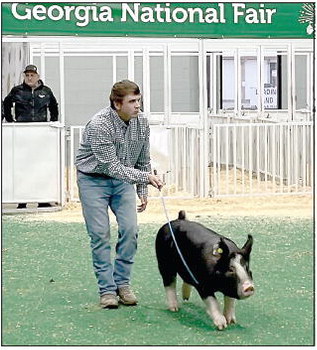Performance Pointers That Can Help Student Athletes Avoid Injury
Professional sports teams often note that injuries are part of the game. That notion is never too far from professional athletes’ minds, but it can be a harsh reality for student athletes to confront, especially if they have never before been sidelined by injury. Though there’s no foolproof way for athletes to avoid injury, student athletes and their families can consider these preventive measures to reduce their risk of being sidelined.
Use diet to athletes' advantage. A healthy diet benefits people from all walks of life, and it can be especially beneficial for student athletes. Precisely what defines a healthy diet depends on variables specific to the athletes, such as age and gender, but Nemours Childrens Health notes that balance is vital for teenage athletes. Avoid cutting back on carbohydrates, which provide fuel for young athletes.
When choosing carbs, opt for fruits, vegetables and whole grains instead of sugar-laden options like candy bars. The latter can provide a quick energy burst but then cause an energy crash that makes athletes feel fatigued. In-game fatigue can increase risk of injury. In addition, calcium and iron can be vital to young athletes looking to avoid injury. Calcium helps strengthen bones while iron carries muchneeded oxygen to athletes’ muscles. Protein is important for athletes, but Nemours notes that most teenage athletes who eat healthy diets already get ample protein.
As a result, protein powders and shakes are not necessary for teenage muscle growth.
Make a good night's rest part of athletes’ routine. A good night’s rest is vital for student athletes, as it ensures they aren’t playing tired. Tired athletes have slower reaction times and that can increase injury risk. Adequate sleep also benefits athletes’ performance. A 2015 study published in the journal Physiology & Behavior found that athletes who increased their nightly sleep from seven to nine hours experienced significantly improved performance after doing so.
Emphasize the rules of the game. The rules of the game aren’t in place solely to encourage fair play. Rules also are designed to keep athletes safe. For example, student athletes who play contact sports, including football and soccer, should be taught proper ways to tackle so they can avoid injuring themselves and others.
Coaches can reinforce these lessons during practices and even games if the need arises.
Prioritize offseason conditioning. Rest and recovery is vital for any athlete, but especially student athletes whose bodies are still growing and changing. Offseasons have largely fallen by the wayside, but parents can protect their student athletes by encouraging them to avoid year-round competition. During periods when student athletes aren’t competing, they can forgo in-season workout routines to reduce their risk for overuse injuries while also improving their conditioning through cardiovascular workouts. Running on a treadmill, using an elliptical machine and/or swimming are great activities that make it easy for student athletes to keep their bodies in shape as their muscles and joints recover from the season.
Though there’s no foolproof way for athletes to avoid injury, student athletes and their families can consider these preventive measures to reduce their risk of being sidelined.






